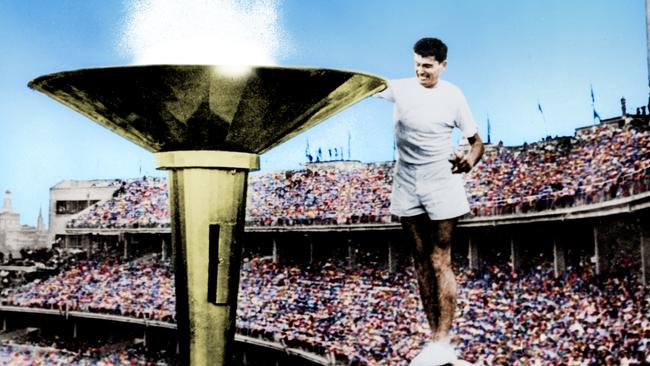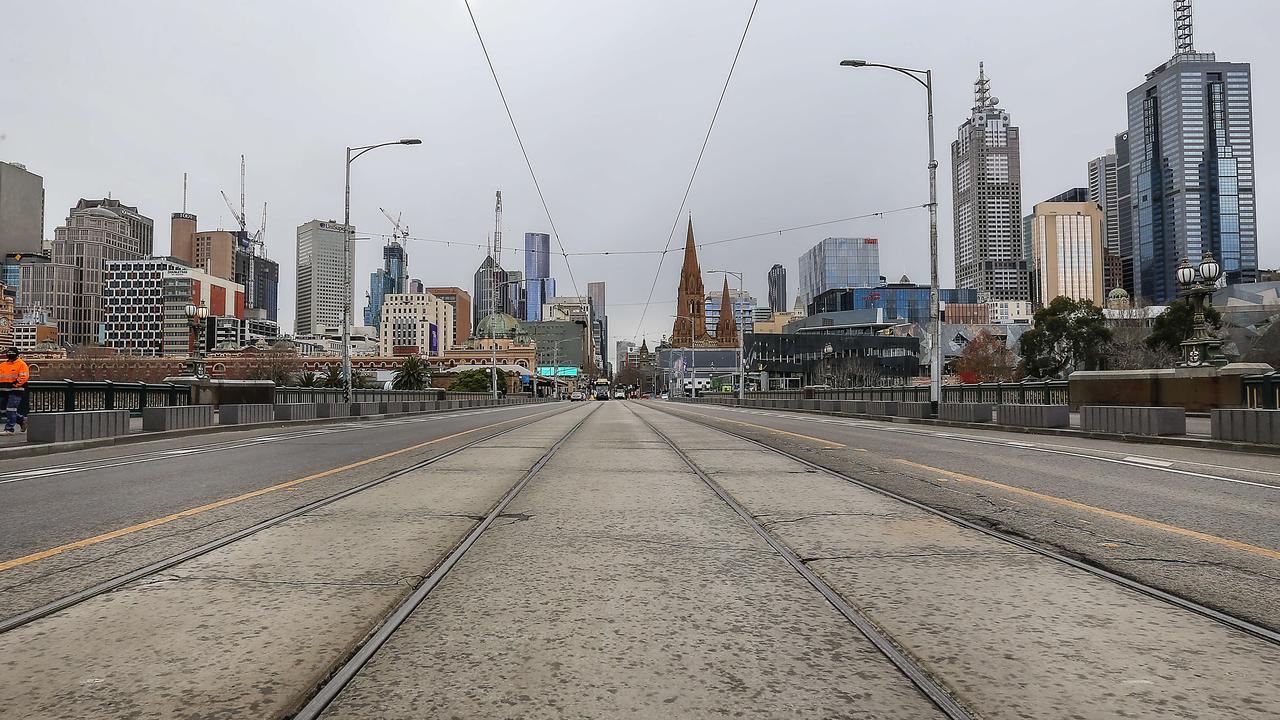Headlong into sport history
RON Clarke was a young athlete still finding his feet as one of the world’s greatest runners when he fell in a tangle of legs at the Australian championship at Melbourne’s Olympic Park.

Opinion
Don't miss out on the headlines from Opinion. Followed categories will be added to My News.
RON Clarke was a young athlete still finding his feet as one of the world’s greatest runners when he fell in a tangle of legs at the Australian championship at Melbourne’s Olympic Park.
John Landy, who was expected to break his own world record, jumped over the fallen Clarke, his spikes driving into the 19-year-old’s Clarke’s shoulder.
Landy stopped and turned back to see if Clarke was all right. Clarke told him to run on. The rest of the field was 40 metres ahead, but Landy caught them and won the race.
Harry Gordon, sports writer and a former editor of the then Sun News-Pictorial, forerunner of the Herald Sun, saw it as “a senseless piece of chivalry’’ that “will be remembered as one of the finest actions in the history of sport’’ .
The fallen Clarke and Landy, hand outstretched to a mate in trouble, are immortalised in bronze, the famous image taken by Herald & Weekly Times photographer.
Clarke, who died yesterday at the age of 78, is too often remembered for the races he did not win, the Olympic gold medal that eluded him.
He won bronze at the Tokyo Olympics in 1964 and treasured a gold medal that was given to him by an admiring Emil Zatopek, known as the Czechoslovakian Locomotive, who won four over his career. He said Clarke richly deserved gold.
It was a disappointment wrapped in a sporting enigma that Clarke never stood on the highest step at Olympic or Commonwealth Games, but broke 17 world records as a distance runner.
Following the fall when in front of Landy, Clarke walked to the top of the MCG to light the flame at the 1956 Olympics. It seemed that this outstanding young athlete’s career was an inextricable part of Australia’s emergence as a nation.
Again, Harry Gordon found the words to reflect what people were discovering about themselves. “It was as if the city had been brushed be a certain magic,” he wrote. “Nothing before or since has ever evoked such emotional involvement from the whole community.”
Melbourne then meant dining off Laminex table tops on a meal out. Sundays were funereal and people wondered whether the city could bring off the Olympics, or whether the British, French and Americans would judge it “a hick town”.
As it was, the 1956 Olympics were a triumph as Clarke lit the flame and a golden era dawned for Australian sport.
Betty Cuthbert was the golden girl of athletics and Jon Henricks, Murray Rose and Dawn Fraser became names never to be forgotten in the pool. Australia finished third on the gold medal count behind the United States and the Soviet Union.
At the 1968 Olympics, Ron Clarke was expected once again to take gold, but collapsed and was near death from altitude sickness in the thin air of Mexico City.
He was an athlete who gave everything, but never grasped what many thought to be the ultimate prize.
Clarke was the younger of two brothers and would probably have played football alongside Jack Clarke had he not chosen to concentrate on athletics. He played for Essendon’s reserves while Jack led the senior team to a premiership as captain in 1962 and played in another Essendon premiership in 1965. Their father also played for Essendon, making the Clarkes one of Australia’s great sporting families.
Not only is Ron Clarke to be remembered for a career that saw him at the pinnacle of his sport, but as a community leader as the mayor of the Gold Coast and a supporter of the emerging Gold Coast Suns football club.
This aspect of his character, as a man as well as an athlete, is best described by friend John Landy, who pays tribute to him as “a wonderfully kind and generous man” and “a great star in the sport of athletics”.
“He held every record from two miles to the one hour,” said Landy, “and no athlete in history has ever marched this feat.’’ There should be a gold medal for that.
SWIM FOR YOUR LIFE
THAT 60 per cent of Victorian children are leaving primary school without meeting basic swimming standards destroys the myth that Aussie kids are like fish in the water.
Sadly, they are not. When Australia ruled the pool at the Olympics, Australian parents were caught up in the excitement. Now a coroner has found that a lack of swimming ability has contributed to an increased risk of drowning.
Nine-year-old Bailey Patman was found lying face down in the water at Seaford after splashing about in the shallows with his friends in January 2012. Coroner Caitlin English will recommend that swimming lessons be made part of the primary school curriculum. Many people will be surprised that this is not already the case.
Life Saving Victoria says primary school is the best time to teach children basic water safety and lifesaving skills. The Victorian Government will save lives by making swimming lessons available to all primary school children. Bailey Patman’s death should not be forgotten.


